A caregiver at Providence St. Joseph hospital beams with joy while holding a baby goat | Photos: Stephanie McGeary
###
Working in healthcare can be incredibly tiring and stressful — especially over the last two years, with hospitals and caregivers overwhelmed by the pandemic. This week, two of our local hospitals, Providence St. Joseph and Providence Redwood Memorial, introduced a new and interesting way to combat stress in the workplace – baby goat therapy.
That’s right. Baby goat therapy.
Baby goat therapy is one type of animal therapy – sometimes called animal-assisted therapy or pet therapy – an increasingly popular practice wherein people spend time holding and petting animals to help reduce stress. Proponents of animal therapy say it has many mental and physical health benefits, including decreasing stress and anxiety, improving mood, reducing fatigue and lowering blood-pressure, to name a few.
“I think it’s a great opportunity to go from a working environment to something that’s soothing, relaxing,” Hilary Eisenburg, from the gastroenterology department, said as she held a baby goat in her arms. “It just feels really nurturing.”
Eisenburg was one of many hospital caregivers, some taking breaks from their shift and others coming in on their day off, who lined up to try out the goat therapy at Providence St. Joseph Hospital on Thursday. As folks entered a room toward the back of the hospital, they sat in a chair and were handed a goat to basically just hold for a little while. The overall response seemed to be joy, with periodic “aw”s from the people from cuteness overload.
Rachel Conway of Francis Creek Ranch in Ferndale brought four goats – two 9-day-olds, named Oreo and Caramel, and two 2-day-olds, who don’t yet have names – from the farm to the hospital. The goats also went for a visit to Redwood Memorial Hospital on Wednesday. Conway said this was her first time facilitating goat therapy sessions, although the ranch does host farm tours where people have a chance to visit with the goats. The goat kids enjoy being held by humans, Conway said, especially when they are very young.
“These guys are all bottle babies and so humans are ‘mom,’’’ Conway told the Outpost. “The older they get, the more they want breaks and don’t want to be in laps all the time.”
And the cuddliness varies with different goats’ personalities too, Conway said. Oreo, for example, is a bit more wily and needs to take a break from being held at least every 30 minutes. Other goats can go closer to an hour without a break. When the goats start looking restless and are wiggling around a lot in someone’s arms, Conway gives them a break by placing them in a pen so they can run and jump around a bit. Conway knows the goats are ready to be held again when they start bleating for attention.
Roberta Luskin-Hawk MD, chief executive for Providence St. Joseph, said that with the increased stress of the pandemic, the hospital has been searching for ways to support the mental health of its caregivers and has made multiple wellness initiatives and services available – including therapy, apps for yoga and meditation. When Luskin-Hawk saw a video of caregivers at a hospital in Oregon receiving baby goat therapy to help them cope with the stresses of the pandemic, she knew it was something she wanted to try. She emailed Christie Duray, volunteer services coordinator, and she just ran with it, Luskin-Hawk said.
This week’s baby goat therapy sessions were a pilot program, Luskin-Hawk said, to see how things went and if it really seemed beneficial. Because the response from the hospital workers was so positive, Luskin-Hawk said the hospitals will almost definitely do it again.
“Our life is very frenetic in healthcare and we’re always responding to something,” Luskin-Hawk said during Thursday’s goat therapy session. “But when you’re holding a baby or a baby goat, you really have to slow down your breathing, get centered and be present. It’s not something that we’re all good at doing on our own, and this forces us to do it. So it’s really pretty cool.”
Scroll down for more photos of baby goat cuteness.
Hilary Eisenburg holding a two-day-old goat
This is Oreo.
Oreo is frisky.

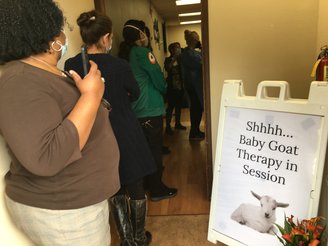
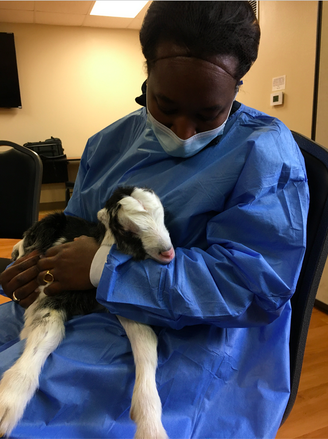
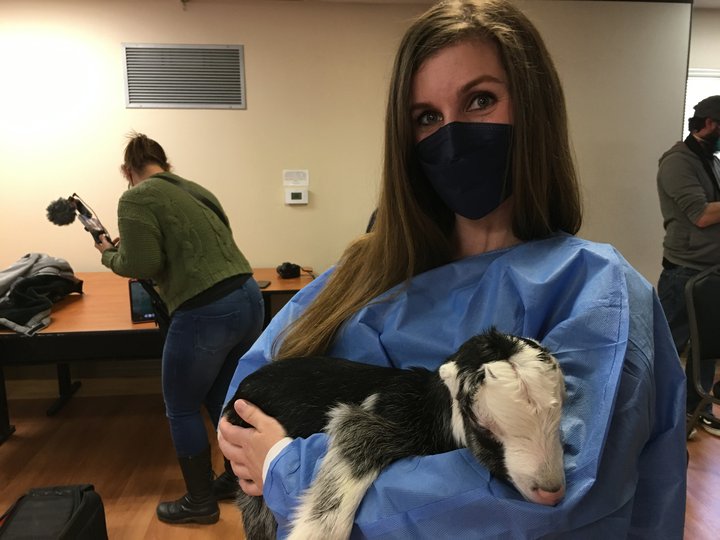


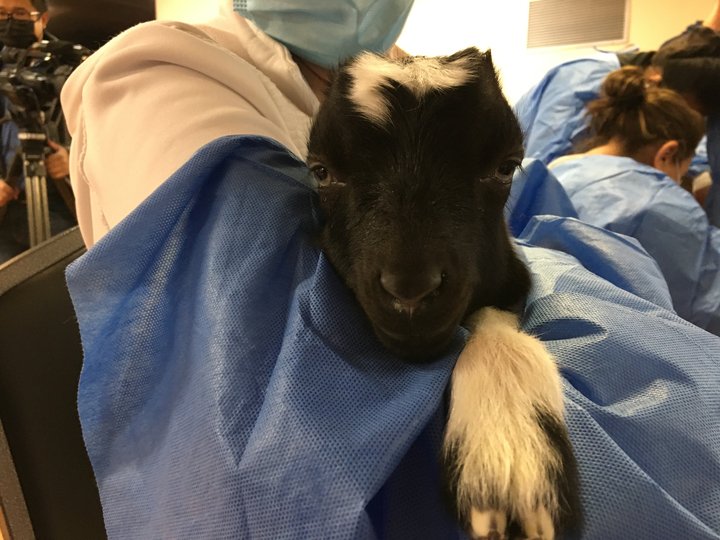
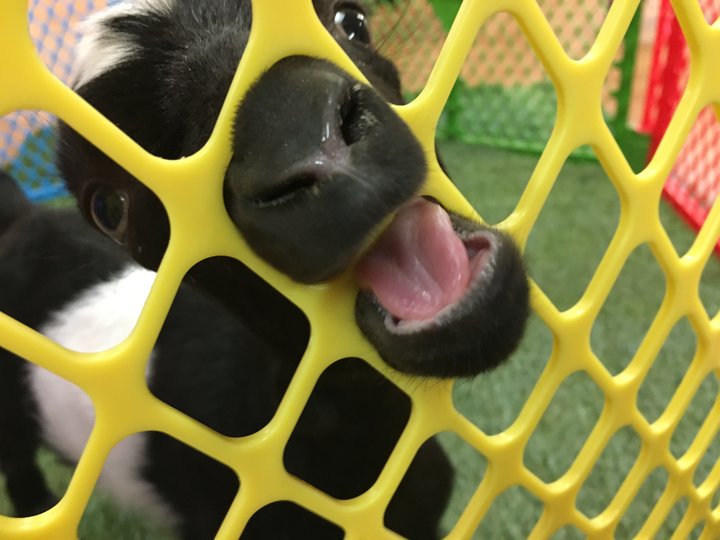
CLICK TO MANAGE